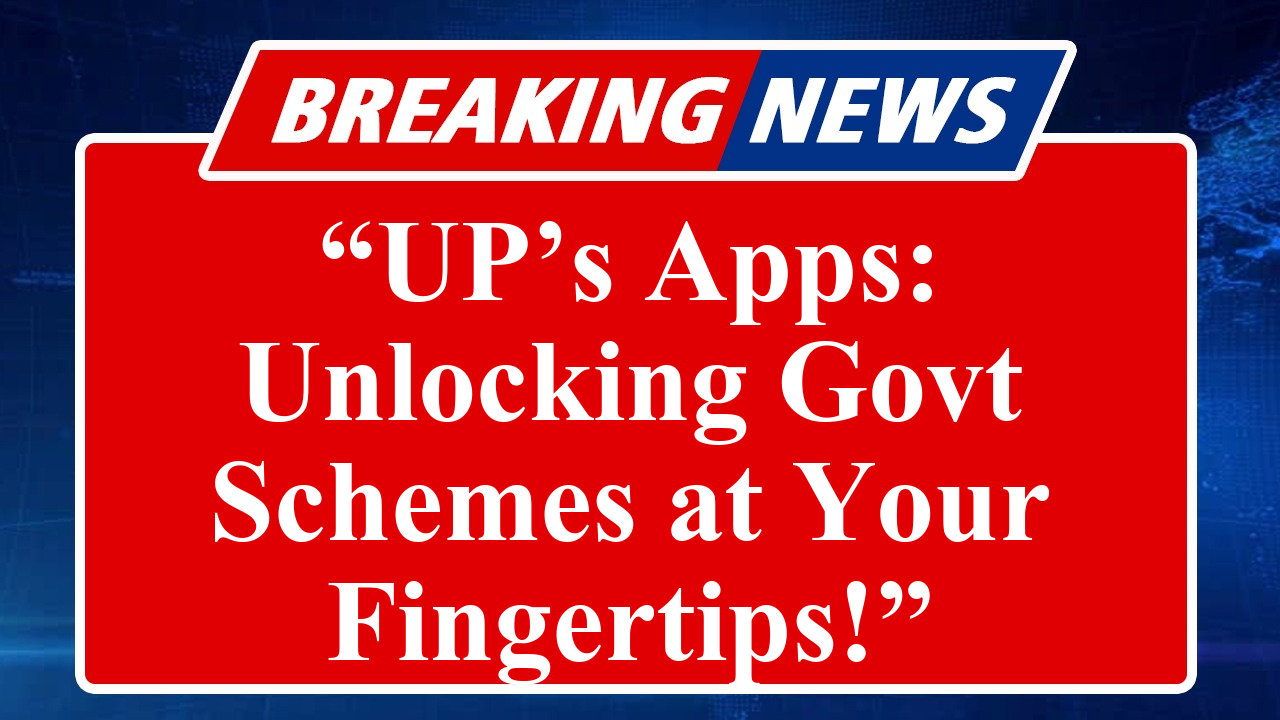“Uttar Pradesh is embracing the digital revolution with innovative apps that streamline access to government schemes, enhancing transparency and efficiency. From agriculture to healthcare, these platforms empower citizens, though challenges like digital literacy and infrastructure persist.”
Uttar Pradesh Harnesses Apps to Transform Governance
Uttar Pradesh (UP), India’s most populous state, is at the forefront of the digital revolution, leveraging mobile applications to make government schemes more accessible to its citizens. The state government has introduced a range of apps under the Digital India initiative, aligning with national efforts to create a digitally empowered society. These platforms aim to simplify access to welfare programs, improve transparency, and bridge the gap between the government and the public.
One of the flagship apps is the UP e-Sewa portal, which integrates multiple government services into a single platform. Launched to provide seamless access to schemes like the Mukhyamantri Kanya Sumangala Yojana and the UP Ration Card Scheme, it allows citizens to apply for benefits, track applications, and receive updates in real time. As of July 2025, the portal has facilitated over 10 million transactions, with 65% of users accessing it via mobile apps, according to data from the UP State IT Department.
The Kisan Mitra App, tailored for farmers, has gained significant traction. It provides real-time updates on agricultural schemes like the Pradhan Mantri Kisan Samman Nidhi (PM-KISAN), market prices, weather forecasts, and soil health data. By June 2025, the app had over 2.5 million downloads, empowering farmers in rural UP to make informed decisions. The app’s integration with the National Agriculture Market (e-NAM) has further enabled farmers to sell produce online, reducing reliance on intermediaries.
In healthcare, the UP Health Dashboard app has transformed service delivery. It connects citizens to schemes like the Ayushman Bharat Yojana, allowing them to locate empaneled hospitals, check eligibility, and access digital health cards. With over 1.8 million active users, the app has streamlined healthcare access, particularly in underserved regions. The state’s integration of the app with the National Digital Health Mission has ensured real-time health record management for 12 million beneficiaries as of August 2025.
The UP e-Pariksha app caters to students, offering access to educational schemes like the Mukhyamantri Abhyudaya Yojana, which provides free coaching for competitive exams. The app includes e-learning modules, scholarship applications, and exam updates. Since its launch in 2023, it has supported over 500,000 students, with 70% from rural areas, leveling the educational playing field.
However, the digital push faces challenges. Digital literacy remains a hurdle, with only 45% of UP’s rural population proficient in using smartphones, as per a 2024 survey by the National Statistical Office. Infrastructure gaps, including inconsistent internet connectivity in remote areas, limit app accessibility. Privacy concerns also loom large, with reports of data breaches in similar digital platforms raising questions about security. The state government has responded by launching awareness campaigns and expanding BharatNet connectivity, aiming to cover 90% of rural UP by 2026.
Collaboration with private tech firms has bolstered these initiatives. Partnerships with companies like Google and Microsoft have enhanced app functionalities, incorporating AI for personalized user experiences and blockchain for secure transactions. For instance, the UP e-Governance platform uses AI to recommend relevant schemes based on user profiles, with 3 million personalized recommendations delivered in 2025 alone.
The myScheme UP app, a state-specific version of the national myScheme platform, simplifies scheme discovery. Users input demographic and income details to find eligible programs, such as the UP Pension Scheme or the Matritva Sahyog Yojana. By July 2025, the app had assisted 4 million citizens in identifying and applying for schemes, reducing bureaucratic delays.
Despite these advancements, critics argue that the digital revolution in UP disproportionately benefits urban and semi-urban areas. Poorer districts like Bahraich and Shravasti lag in adoption due to low smartphone penetration and literacy rates. The state has allocated ₹500 crore in the 2025-26 budget to address these gaps, focusing on digital literacy camps and subsidized smartphones.
The integration of Aadhaar and DigiLocker into UP’s apps has further streamlined processes. Citizens can authenticate identities and store documents digitally, reducing paperwork. As of June 2025, UP’s DigiLocker platform had 15 million registered users, issuing 200 million digital documents, including ration cards and caste certificates.
Disclaimer: This article is based on recent news, government reports, and data from the UP State IT Department and national platforms like Digital India. Information is sourced from reliable outlets, including PIB, IBEF, and media reports. Readers are advised to verify details through official government portals for the latest updates.

